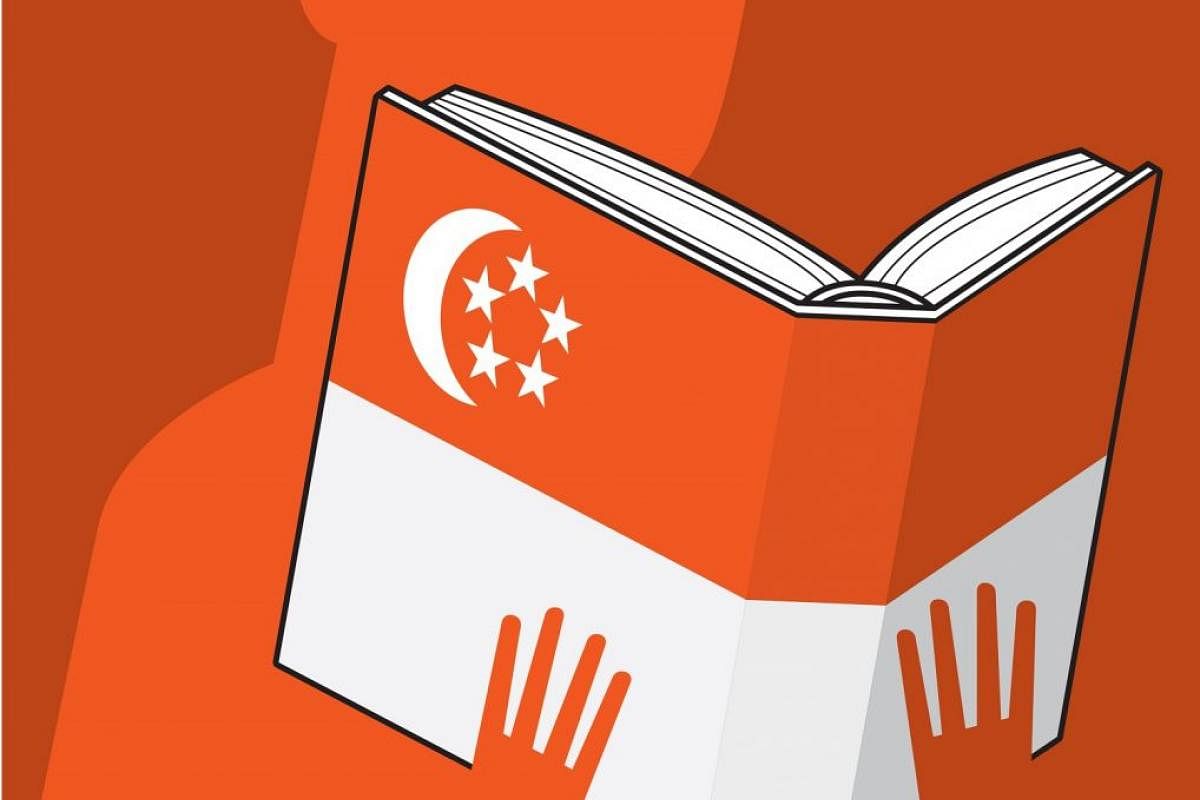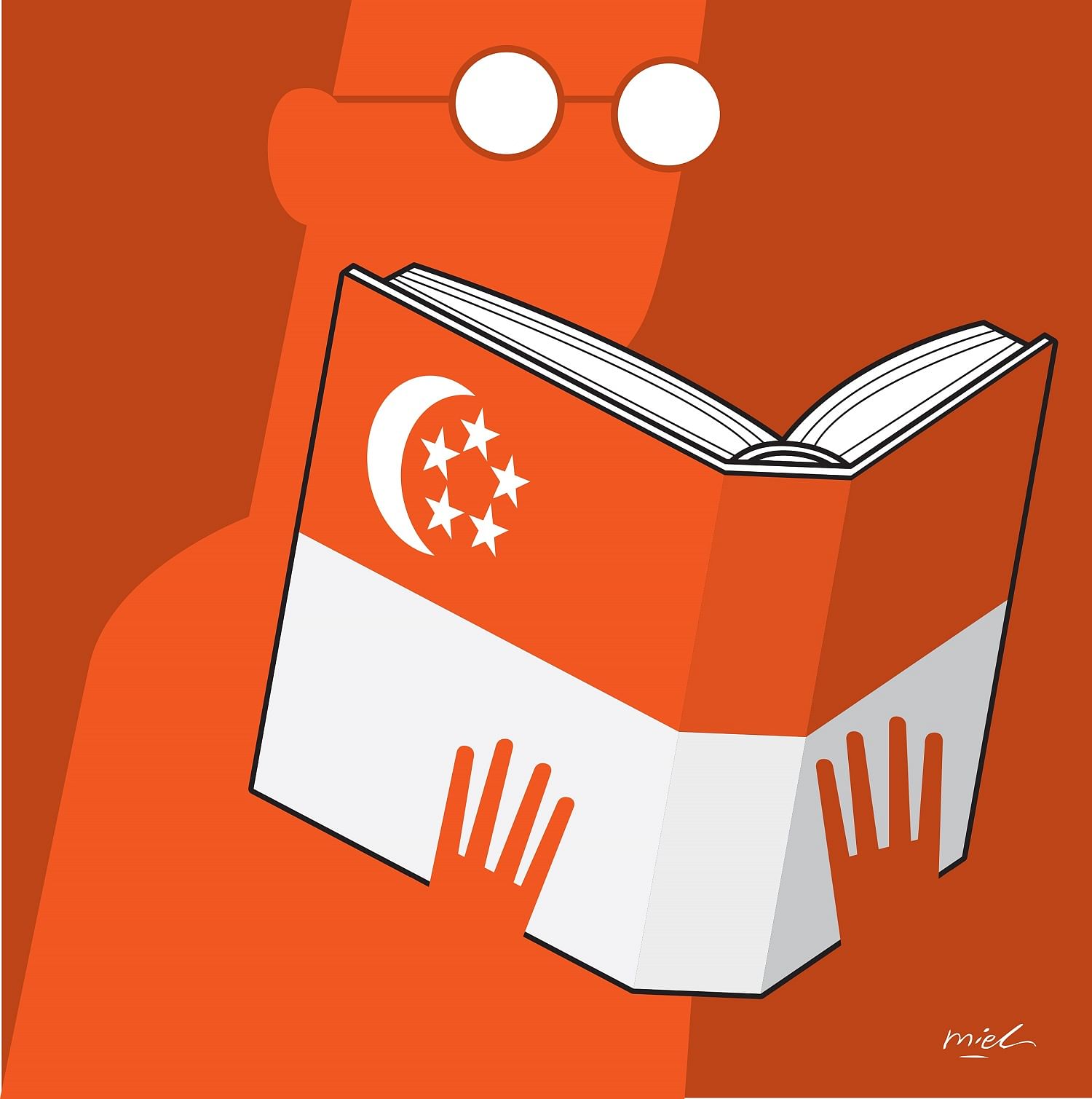Make it a read and white day
This National Day, celebrate with any good book about Singapore to appreciate what we have and how to go forward from that

Times are changing in Singapore. The Government is re-imagining the economy to help boost productivity and keep the unemployment rate low, as seen by the formation of the Future Economy Council, initially known as the Council for Skills, Innovation and Productivity.
In politics, a new generation of leaders is stepping up, and a new prime minister might take over in the foreseeable future, as the current PM has indicated that he might step down after the next general election.
Socially, the population is ageing, and income inequality remains a challenge.
As Singapore charts a new future, we must not forget to look back every now and then. Understanding history and geopolitical realities is paramount in navigating the many challenges that lie ahead.
When I was a young foreign service officer, the best piece of advice I got from my supervisors was to read books about the countries and regions that I was tasked to report on. While the newspapers provided news and commentary on the latest political or economic development, a good book gave me an insight into the country's history, its people, its struggles and its victories.
Such is the emphasis on developing a deep understanding of the world around us that the Ministry of Foreign Affairs has its own library and a dedicated team of librarians helping its officers to access any publication that would build their knowledge of a foreign country - which will, in turn, allow them to further Singapore's interests abroad.
This year, I finally got around to reading a book about my own country, Singapore. It was Men In White - The Untold Story Of Singapore's Ruling Political Party, written by Sonny Yap, Richard Lim and Leong Weng Kam. The three writers, who were then with The Straits Times, brought to life Singapore's history - from the formation of the poor man's party, the PAP, and its stint in opposition, to the merger with and separation from Malaysia and the purge of the communists.

While for brevity we sometimes simplify our history lessons to, "Independence was a good thing, one-party rule saved Singapore and the communists were an existential threat", nothing is ever so black and white.
Every year, we celebrate National Day on Aug 9, not because it was the day Singapore won independence (after all, it was expelled from Malaysia), but because Singapore has since, somehow, managed to build a successful city-state and made room for itself in an uncertain and, at one point, hostile neighbourhood.
Reading about the Big Split within the PAP and its tussles with its own offshoots, the United People's Party and Barisan Sosialis, in the 1960s, was not only enthralling, but humbling and illuminating as well.
THE 'WHAT IFS' OF HISTORY
One can't help but wonder how different Singapore and its politics would have been had Barisan secured more seats in the 1963 elections by being more tactically astute or if it had not boycotted the 1968 elections, the first after Independence.
After all, Singapore's first Foreign Minister S. Rajaratnam called the latter the biggest turning point in the nation's political history, and founding father Lee Kuan Yew said it was "a stroke of destiny".
Would we have a more politically active populace if the PAP had not dominated Parliament as it did in the 1970s and 1980s and, in a way, ever since?
Would we have had more equality but less economic development if Barisan had won and implemented its more left-wing ideas?
Would we have had a more consultative government, but one with limited ability to plan for the long term, if there had been a more robust opposition and a greater contest of political and economic ideas?
No one knows. Regardless, it is worth noting that these were men and women willing to sacrifice their livelihoods and their own futures to make Singapore a better place for all to live in. Most of all, they cared for the working class, who were the majority then, and were intertwined with the politics of the day through the many trade unions.
As tumultuous as Singapore's early years were, when the dust settled, Singapore came out stronger.
The communists or communist sympathisers became political prisoners, and were locked up or banished for long periods, but not without first making an indelible contribution to Singapore's success.
First, the so-called leftists within the PAP helped the party move from opposition to forming the government in 1959, a mandate it has not relinquished since.
Even after the split within the party in 1961, the conduct, in particular, the dedication and selflessness of the communists, socialists - call them what you may - set the bar very high for the PAP, as acknowledged by Mr Lee himself. In terms of policy, this quote from the book, attributed to Mr Dominic Puthucheary, a former PAP member who was one of those who defected to form Barisan Sosialis, sums it up:
"PAP had to make capitalism succeed to prove to the left that it was better than socialism... so this competition between the left and PAP produced a positive effect in that PAP had to prove that capitalism was more democratic, more socially orientated, that it had a heart and a human face."
POLITICS IS ABOUT THE PEOPLE
There lies the lesson for current and future generations. While we can never know how Singapore would have been if its politics had evolved differently, our history will always remind us that, at the end of the day, good politics is always about the people it serves.
A generation is dying out and with them their stories. Soon, Singapore's political crises before and after its unusual independence from Malaysia will become what the French Revolution is for the French or what the American Civil War is for the Americans: a story from a long time ago that current generations try to preserve and relive in order to learn from it and be inspired.
The best gift to yourself this National Day would be to read any book on Singapore. As time passes and memories fade, we need to immerse ourselves in the literature, and learn from different viewpoints about the good, the bad and the ugly. It is only then that we will be able to truly appreciate what we have, what we lost and how we should build a new Singapore consensus.
The recently published award-winning comic book, The Art Of Charlie Chan Hock Chye, by Sonny Liew, is another excellent book, which chronicles the life of a fictional comic artist in Singapore from the 1950s to the present day.
It enlightens its readers about Singapore's history from the point of view of the common man, in a clever, thought-provoking and relatively light-hearted graphic novel.
On the very first page of the book, protagonist Chan Hock Chye reminds us that the "si" in Malaysia comes from Singapore, following the short-lived merger in 1963 when "Malaya" became "Malaysia".
"What's in a name?", you might ask. Just our history, geography and a poignant reminder that no one owes us a living.
•The writer is a former Singaporean diplomat who writes about sociopolitical issues in Singapore and who is working as a public policy consultant in Australia.
Join ST's Telegram channel and get the latest breaking news delivered to you.
A version of this article appeared in the print edition of The Sunday Times on July 30, 2017, with the headline Make it a read and white day. Subscribe
